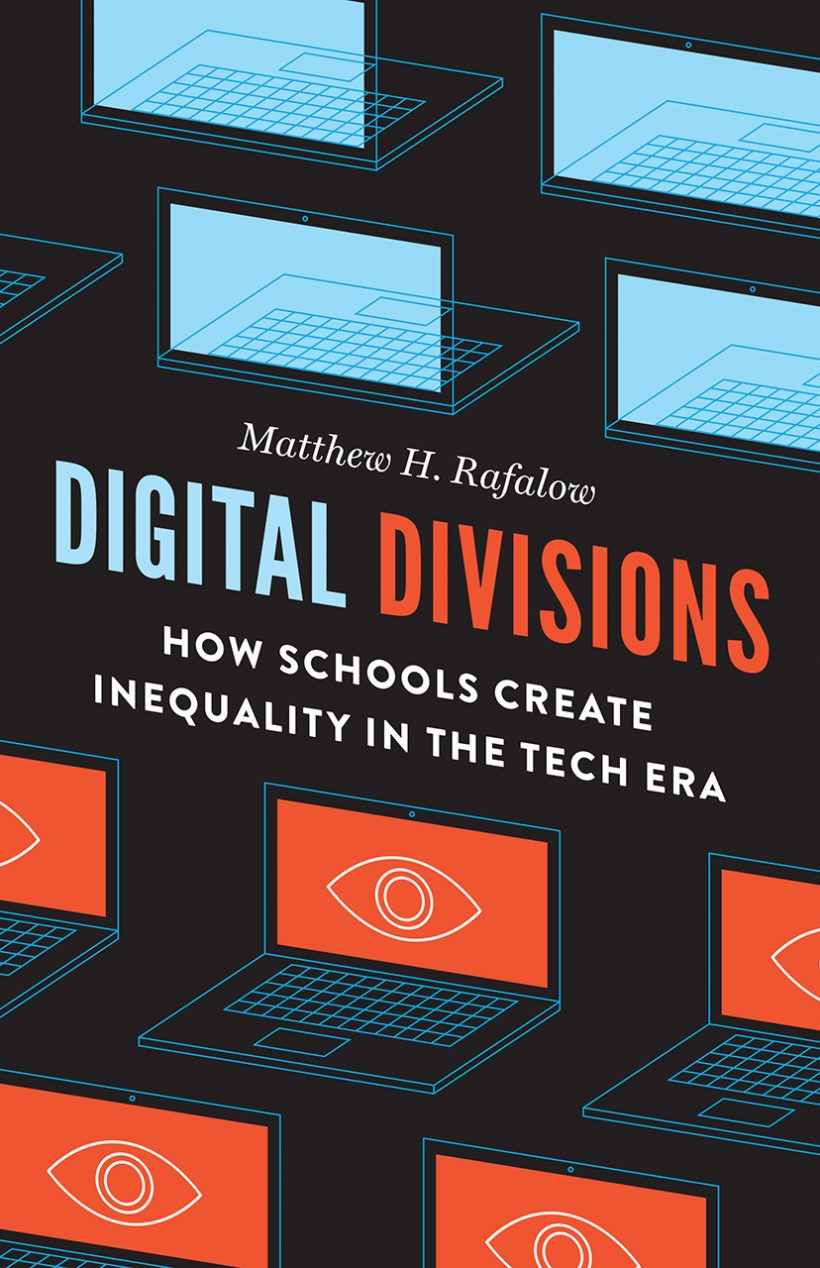In the wake of the Covid-19 pandemic the optimism of the early days of the world wide web appears to have completely abated. The pandemic has proven justification for a host of the more insidious practices of internet surveillance to become much more mainstream. In this context, Digital Divisions: How schools create inequality in the tech era becomes even more relevant. It is a book that I believe should be widely read beyond the field of education.
 The text provides extensive empirical evidence to show how pervasive structural violence is. In this, technologies are far from neutral: rather contemporary technologies layer on, rather than disrupt, the systems of inequality, prejudice and imagination that define the contemporary US, as well as the rest of the world. My wish is that every executive in Silicon Valley could read this book before preaching disruption and change and suggesting that an app could make the world a better place.
The text provides extensive empirical evidence to show how pervasive structural violence is. In this, technologies are far from neutral: rather contemporary technologies layer on, rather than disrupt, the systems of inequality, prejudice and imagination that define the contemporary US, as well as the rest of the world. My wish is that every executive in Silicon Valley could read this book before preaching disruption and change and suggesting that an app could make the world a better place.
The ‘world’ is absent in this book. I point this out here not so much as a critique, but rather in recognition that in the same way different tiers of US schools track students for particular roles, children in different parts of the globe are increasingly tracked towards differentiated futures – of, by, and with technology. In order to understand the true impact of these technologies for learning and for the future, scholars need to be able to think across the micro, and the planetary scale. This book is an excellent example of the former, but the latter is now urgently needed – particularly in the wake of the global pandemic.
This is a book about children in the United States, and therefore about the future of the United States as well. Through a detailed exploration of the way that children play online in three middle schools with very different histories and socio-economic contexts, it highlights the many ways in which imagination, innovation and critical thought are disciplined. Through these micro-acts of discipline, students are “tracked” towards adult roles that perpetuate – and in some cases exacerbate – the tracking of futures that has taken place in almost all education systems of the industrial – and now perhaps post-industrial age.
In the introduction Rufalow lays out the context of the study: three middle schools, all within driving distance, that serve very different student populations. One group of students is largely affluent and largely white; another is largely “middle class” and majority Asian; students from the third school come from working class homes and are mostly Hispanic. He writes that:
“To assess whether and how schools are preparing students for the digital age, we need to take a careful look at day-to-day life in today’s technology equipped classrooms. We need to assess how teachers at these schools conceive of the value of digital technologies for achievement and use technological tools for instruction. Digital divides, while worrisome, are only one roadblock to students’ potential, and documenting teacher’s perceptions and practices will enhance our understanding of innovators’ genesis beyond more simplistic garage theories.” (p7)
Through these micro-acts of discipline, students are “tracked” towards adult roles that perpetuate – and in some cases exacerbate – the tracking of futures that has taken place in almost all education systems of the industrial – and now perhaps post-industrial age.
Rufalow does this work effectively, by illustrating ethnographically how teachers use the same technologies for very different purposes, and with different results. Affluent students are taught to “create” and “innovate” with technology, whereas the rest are disciplined by the same tools: surveilled, embarrassed, and often policed. This, Rufalow argues, will have significant consequences for their admission into university, their choices of employment, and the likelihood that they will become knowledge creators as opposed to knowledge consumers – arguably a key divide in the so-called “knowledge economy”.
Digital technologies are situated by the context of the students and also the expectations of the teachers. Left to their own devices (literally and figuratively) the book explores how children use available technologies in similar ways. The crucial differentiator has less to do with the children’s understanding of what the technology can be, but instead the ‘discipline and punishment’ they experience from authority figures. In an economically under-resourced school, play is treated as a punishable offense. In the middle class school, it is simply ignored. Where there is wealth, play is celebrated for its potential to yield original insight and critical thinking.
In order to make sense of the different patterns of disciplinary action that Rufalow observed over approximately 600 hours across the three schools, he reflects on how teachers themselves internalise notions of appropriate behaviour. Importantly, he asks the subtle question ‘appropriate for who?’ which allows him to go deeper than a surface analysis of publicity, friendly diversity and inclusion. In the process, he reveals a great deal about whiteness that is of value at the current moment, where in the US, in particular, whiteness is now one marked category amongst many rather than an unquestioned category of privileged identity.
The crucial differentiator has less to do with the children’s understanding of what the technology can be, but instead the ‘discipline and punishment’ they experience from authority figures.
Through careful ethnographic analysis, he provides examples of the expectations that teachers have for their students’ lives: ‘the next Steve Jobs’ from the wealthy school, a solid middle-manager from the ‘model minorities’ in an Asian-American area, and perhaps a content-moderator in the mills of social media review from a child whose parents were assumed to have worked, at best, in factories. In this way, he argues, schools act as ‘socializing agents’ for participation in differentiated digital life that mirrors the offline world. Far from ‘disrupting’ the future, technology perpetuates existing patterns, and by the time kids apply for university, their futures are no less tracked than they were in the age of physical encyclopedias.
Reading this book as a scholar of curriculum transformation in South Africa, Angola and Mauritius where the digital divide is very real and the pandemic has likely set school-children’s learning back by many years, I found myself processing a great deal of grief. The differentiation experienced by children in three schools in one of the wealthiest countries on earth will be magnified in myriad ways across the globe.
To reflect on equity in education we have to think of not only digital cultures within countries, but also between them. Just as teachers prove the gatekeepers to the learning of young Americans, we may find that diplomats, politicians and importantly corporations dictate expectations and inform the realities of play, imagination, and work expected from today’s young minds in the global South – in addition to the roles played by their teachers. Technology remains a tool that can be used for radical transformation. Yet as Digital Divisions shows very clearly, it is the limitations of human imagination, and the manifestation of this imagination in policy and politics – that ultimately guides their use.
Featured Image by Samantha Borges on Unsplash



